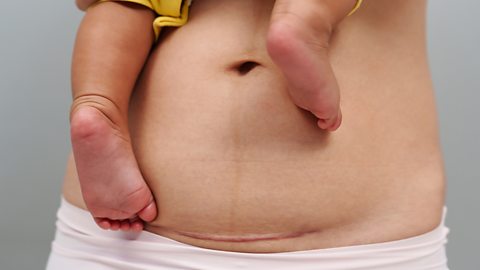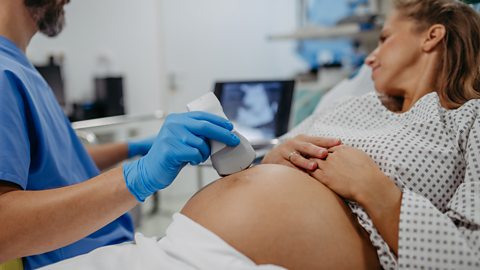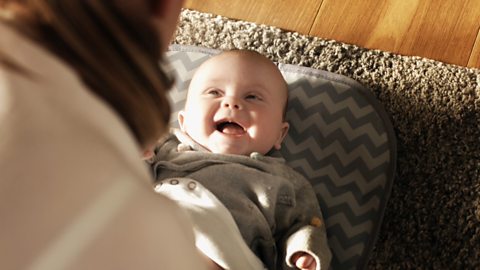According to the NHS website, around 1 in 4 pregnant women give birth by caesarean section.
But understandably, prospective parents will have lots of questions around the procedure. Can you choose to have one? How long does the operation take? What does recovery look like? To answer these questions and more, Tiny Happy People spoke to consultant midwife Memuna Sowe.
Memuna explains that while the experience varies hugely for mums-to-be, there is advice that everyone can bear in mindãÎ
ãBe easy on yourself. Be really open-minded and donãt be fearful. Most women come in with the fear of not wanting a caesarean and some may need it in an event where itãs safer for both Mum and baby. Be able to accept your mode of birth.
ãThere are support systems - if you have any anxiety seek appropriate medical advice. It's not always just straight to your midwife, there's different professional bodies within the hospital - consultants, consultant midwives, and post-natally a six-week check by your GP, as well as health visitors.
ãIt's knowing that there's a huge range of professionals that are able to support you.ã

What is a caesarean section or C-section?
A caesarean section is a method of delivering a baby. ãIn the most simple terms,ã Memuna explains, ãitãs a mode of delivery where your baby is delivered through your abdominal walls.ã
During the operation, professionals cut through the stomach and womb to reach the baby. This incision, which is usually in the shape of an upside-down ãTã, is then sown up after delivery.
Why might you have a C-section?
ãPeople have caesareans for different reasons,ã Memuna explains. ãIt doesnãt mean youãve not had a successful vaginal birth. It often depends on the risk factors in the ante-natal period (during pregnancy and before birth) and in delivery.ã
In short, a professional might suggest a C-section if a vaginal birth might compromise the safety of mum or baby.
ãWe also talk about maternal choices. Women can opt to have their baby through a caesarean section.
Memena says this choice might be as a result of ãanxiety around pregnancy, fear of hospitals, or previous traumatic vaginal birth.ã
Can you choose to have a C-section?
There are risks associated with C-sections, but Memuna explains that, depending on your situation and the doctorãs advice, you can opt to have a caesarean birth.
ãYou can make this choice at any point in their pregnancy before delivery,ã says Memuna.

How long does a C-section take?
ãThis completely varies,ã Memuna explains.
ãYou are [typically] in theatre for up to two hours. We need to do appropriate checks once the baby is out and we need to close everything as well, which can take a while.ã
ãThe bit where the baby comes out is very quick, but ultimately it varies for individual cases.ã
How long does it take to recover from a C-section?
Again, this can vary, but Memuna says, ãYou can get home from the hospital as quickly as the day after your caesarean birth, if all is well. However, some women may choose not to if they need any further support.ã
She goes onto explain that once the mum has emptied their bladder by themselves, is able to get up and go to the toilet and move around, they can go home.
At home, ãthe advice we give is up to six weeks to recover, following the advice of the medical team, so not carrying heavy objects, not doing strenuous tasks, just to make sure that youãre not putting any pressure on the scar.
ãPeople forget that theyãve had a large abdominal surgery!ã
After the surgery there will be dressing around the scar to ensure it heals properly, this is often removed the next day, but Memuna says, ãit depends how your C-section scar is healing. If your scar isnãt healing, weãd redress it again. And if itãs healed, weãll take it off.ã
Seek advice from a medical professional before removing the dressing.
Can you drive after a C-section?
Youãre recommended not to drive for the first six weeks after birth, to allow your body to recover.
When can you bathe or shower after a C-section?
ãWe always say that you can have a shower, but itãs making sure that the [scar] area and dressing is clean and dry afterwards,ã Memuna says.
ãA good tip for the day you remove the dressing is to have a shower or bath to make it quite damp which makes it easier to remove. Most dressings are removed the day after.ã
ãAbsolutely recommended to bathe and shower, as long as you feel up to it.ã
Can you have more than one C-section?
Yes, though there can be added risks.
Memuna says that a second C-section can increase the chances of problems like uterine rupture, but it is possible to have multiple births this way.
Women who have had previous C-sections can also give birth naturally.

What happens after a C-section?
Once you leave hospital after a caesarean section birth, the midwives, GPs and health visitors will ask you to keep mobile, ensure that you're passing urine regularly and staying hydrated, and wear anti-embolism tights and stockings to help prevent blood clots.
They'll help you make sure that any pain is managed appropriately, and that the wound is clean and dry. Memuna suggests wearing really loose clothes, not pants where the lining cuts in, to protect the new scar.
You'll also be asked to keep and eye out for signs of infection, such as tenderness, redness, soreness, or smells.
For help, you can look to the different healthcare professionals in and out of hospital, but there are also local organisations like pregnancy or womenãs networks that can offer hands-on support.
Childrenãs centres and family hubs are a great local resource that often have a range of professionals under one roof. According to Memuna, mums should seek these out after birth.






